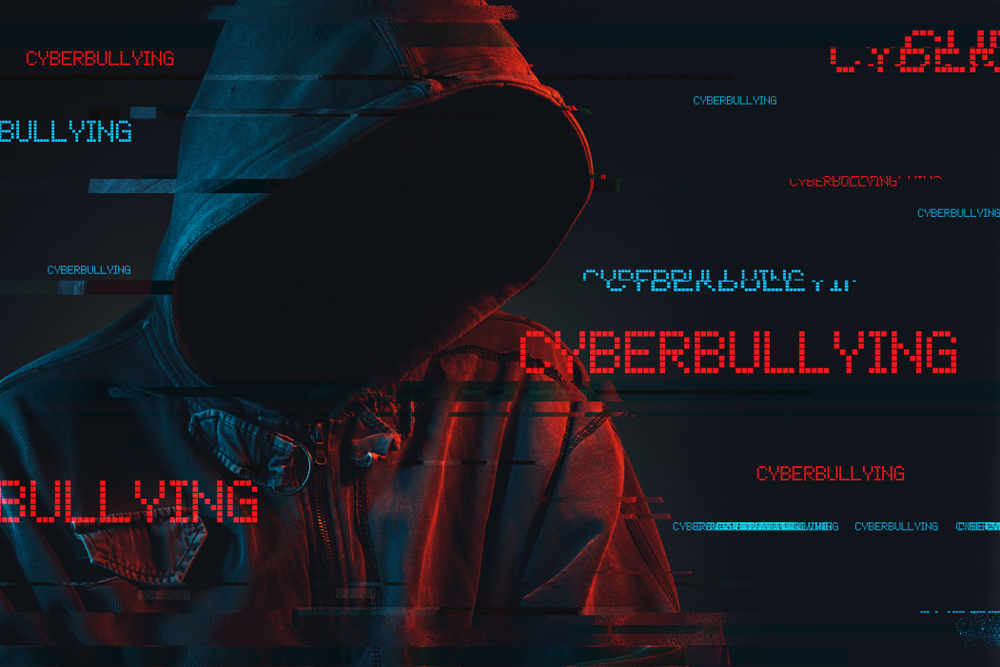Cyberbullying is a severe, often relentless form of digital harassment that can manifest in many ways, impacting individuals’ emotional well-being and security. On this International Day Against Violence & Bullying at School including Cyberbullying, Check Point Software Technologies is driving the push to leverage cyber security to significantly curb the prevalence and impact of cyberbullying.

Today, cyber security strategies not only safeguard systems from breaches but are instrumental in protecting individuals, especially children from cyberbullying.
Cyberbullying in all Forms and Shapes
Cyberbullying refers to any form of harassment, abuse, or defamation conducted via digital platforms. Unlike traditional bullying, cyberbullying occurs in the virtual realm, meaning it can follow victims anywhere, anytime, with devastating effects, taking the forms of :
- Impersonation: Cyberbullies often create fake accounts to impersonate their victims, leading to misunderstandings, reputational harm, or exploitation. For example, a bully may impersonate a student to send harassing messages to their peers, creating rifts and damaging relationships.
- Doxxing: This involves publicly sharing someone’s personal information (address, phone number, etc.), putting them at risk of physical harm or further online harassment. Such exposure can lead to ongoing fear and distress.
- Harassment & Stalking: Cyberbullies may send threatening or harassing messages repeatedly, or stalk victims across platforms. This form of bullying is especially prevalent on social media, where anonymity can embolden perpetrators.
- Revenge Porn & Sextortion: Cyberbullies might share explicit images without consent or threaten to do so unless demands are met, a tactic called “sextortion,” which has seen a dramatic rise globally. The FBI has reported rising cases, urging students and parents alike to remain vigilant.
Mitigating Cyberbullying with cyber security
Cyber security is a valuable ally in the fight against cyberbullying, offering both protective and preventive solutions that help individuals avoid falling prey to bullies or being exploited online.
- Advanced Identity Verification: Multi-factor authentication (MFA) and identity checks help prevent unauthorized access to personal accounts, reducing opportunities for impersonation, account takeovers, and subsequent cyberbullying.
- Content Moderation and Filtering: AI-based tools filter and block abusive language or suspicious links on social media and educational platforms, helping reduce instances of harassment and potentially harmful interactions.
- End-to-End Encryption: Encryption secures private messages and sensitive content, ensuring only intended recipients can view information, making it harder for cyberbullies to intercept and misuse data.
- Digital Footprint Tracking: Cyber security tools can track online activities and create detailed digital trails, helping to locate and identify bullies who attempt to hide behind anonymous profiles.
- Reporting Mechanisms and Evidence Collection: Many platforms now incorporate reporting options that let users easily document and flag abusive content. Storing this digital evidence can aid in potential investigations.
Does Regulations Against Cyberbullying Work?
As cyberbullying increases worldwide, various nations have enacted regulations to combat it, though the effectiveness and enforcement levels differ widely.
For example, in Singapore,the Protection from Harassment Act (POHA), first enacted in 2014 and amended in 2019, offers recourse against cyberbullying by allowing victims to seek protection orders. Violations are criminal offences that carry substantial fines and jail time. Japan has gone a step further, after a surge in disturbing cyberbullying cases publicity, fueled by the suicide of Hana Kimura, a professional wrestler and reality television star, who had been receiving online abuse from social media users, in the months leading up to her death. This led to the introduction of stricter regulations under the Cyberbullying Prevention Act, focusing on the takedown of offensive content and penalizing perpetrators. In 2022, Japan imposed harsher penalties for online abuse, making “insults” on the internet punishable with a one-year prison sentence and a maximum fine of $2,500.
In Australia and New Zealand, in a united showing of the seriousness of cyberbullying, both governments have enacted robust cyberbullying laws with Australia’s Cybercrime Act and New Zealand’s Harmful Digital Communications Act enforcing strict penalties, including jail sentences for online harassment.
In the United States, cyberbullying is rife according to the Pew Research Centre, where nearly half of US teens have been bullied or harassed online, with physical appearance being seen as a relatively common reason for insults. However, there is still federal law against cyberbullying, though 44 U.S. states have implemented criminal penalties related to cyberbullying. Whilst these laws vary, they do often include strict penalties for sharing harmful content and online harassment.
In Europe, many EU countries enforce stringent privacy laws under the General Data Protection Regulation (GDPR), which indirectly covers aspects of cyberbullying by protecting personal data and penalizing data misuse.
Collaborating to Stop Cyberbullying
An integrated approach combining cyber security, education, and regulatory action offers the most effective protection against cyberbullying. Check Point Software suggests the following actionable methods that can prevent or mitigate cyberbullying and its effects:
- Enhanced Privacy Settings: Encourage individuals to use privacy settings on social media platforms to control who can see and interact with their content.
- Multi-Factor Authentication: Implement MFA on all accounts to prevent unauthorized access, making it difficult for cyberbullies to hack into personal profiles.
- AI-Based Content Moderation: Use AI tools to identify and filter abusive language and suspicious behaviour, especially on youth-oriented platforms.
- Digital Literacy Education: Educate young users on recognizing cyberbullying, reporting it, and practicing safe online behaviour to reduce their risk.
- Legal Recourse & Reporting: Strengthen cyberbullying laws and ensure reporting mechanisms are easily accessible to victims, with clear paths to hold perpetrators accountable.
- Support Networks and Counseling: Establish online and offline support for victims, as cyberbullying can lead to long-term emotional impacts. Platforms and institutions should facilitate access to counseling and peer support.
- International Collaboration: Given the cross-border nature of cyberbullying, fostering international partnerships can help enforce laws across jurisdictions and bring perpetrators to justice.
- Protection: Parents should also pay attention to how their children interact in the virtual world. Check Point offers SandBlast for Education, an extension designed for schools that allows teachers to monitor students’ online behaviour and block offensive comments.
“Cyber security plays a fundamental role in safeguarding our digital lives beyond the traditional corporate and government spheres,” says Ram Narayanan, Country Manager at Check Point Software Technologies, Middle East. “By empowering individuals, especially students, with secure tools and digital literacy, we can diminish the pervasive effects of cyberbullying. We believe in fostering an environment where education, regulation, and cyber security converge to build a safe and respectful digital space for everyone. Working together to dismantle cyberbullying, we can create a digital world where security and kindness coexist.”










Discussion about this post